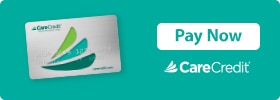Beat the Heat: Pepare for hot summer days
A growing number of children and young adults are playing sports during late summer and early fall in hot, humid conditions. Each year nearly 100,000 high school athletes in the U.S. suffer heat-related illnesses that require medical attention, and cause them to miss practices or games.
Prolonged exposures to high temperatures, direct sun and high humidity, without sufficient rest and fluids, can lead to dehydration. When we exercise, our bodies cool off by sweating, losing necessary body fluids. If the fluids aren’t replaced, the body becomes dehydrated, making it difficult to sweat and cool down, which can result in a heat injury.
Early signs of dehydration include fatigue, thirst, dry lips and tongue, lack of energy, and feeling overheated. It athletes wait to drink until they feel thirsty, however, they’re already dehydrated. Thirst doesn’t usually kick in until a player has lost 2% of his or her body weight through sweat.
Because their body surface area of children and young athletes makes up a greater proportion of overall weight than an adult’s, children and young athletes face a much greater risk of dehydration and heat-related illness.
Conditions & Symptoms
Heat cramps in the arms, legs or abdomen usually occur after several hours of exertion in the heat, and can be painful enough to take a player out of practice or the game.
Heat exhaustion also occurs after long periods of heat exposure when the body’s sweat response stops working properly. Symptoms include nausea, dizziness, muscle cramps and pale, cool skin. If ignored, head exhaustion may lead to heat stroke.
Heat stroke is the most serious of all heat-related conditions because the body’s cooling system has shut down, causing body temperature to rise to dangerous levels of over 104º F. Symptoms include hot, dry skin, lack of sweating, fast pulse, confusion, and sometimes even seizure of coma. Heat stroke requires immediate medical attention and is preventable by watching for signs of heat exhaustion.
Prevention
Heat cramps, heat exhaustion, and heat stroke are all a result of dehydration and lack of body awareness. Athletes, parents, coaches and medical staff need to constantly monitor water intake and look for warning signs of heat exhaustion. It’s much easier to prevent heat illness than to treat the symptoms once they develop.
Prevention methods include following a few simple guidelines like proper hydration, acclimatization, training and conditioning.
Hydration
Fluid replacement is essential to preventing heat injury. Drink cool water and sports drinks early and often. Go to practice or play fully hydrated and be sure to take regular breaks to drink fluids even if you don’t feel thirsty. A general recommendation is 24 ounces of non-caffeinated fluid two hours before exercise. An additional 8-ounces of water or sports drink right before exercise is also helpful. While exercising, break for an eight ounce cup of water every 20 minutes.
Acclimatization, Training & Conditioning
Lack of acclimatization to hot weather and exercising beyond your level of fitness can lead to heat illness. It’s important to allow ample time to adapt to a new activity or climate. Before exercising in the heat, athletes must be in good physical condition and give their bodies time to adjust to warmer temperatures. The fitter you are going into the hot, humid season, the better you’ll be able to handle the conditions.
Prior to summer practice season, jogging, cycling and other exercise will help slowly build up fitness level and the ability to handle the heat. Gradually increase the intensity and duration of your exercise program. Participate in pre-season conditioning programs during weather conditions similar to a typical practice, and if the sport requires protective equipment, avoid wearing it, when possible, at the start of training.
Treatment
When heat cramps occur, stop activity and sit out of the sun in a cool place, drink cool liquids with electrolytes, and gently stretch and massage the affected muscles until the cramps subside.
Heat exhaustion should be treated in the same way but athletes should not be allowed back on the field the same day. Remove excess layers of clothing or bulky equipment. Cool wet clothes can help cool overheated skin. If the athlete doesn’t improve, or can’t take fluids, see a doctor.
Heat stroke is always an emergency and requires immediate medical attention.
In case of Heat Stroke:
- Call 911 immediately for emergency services
- Monitor core body temperature and lower it as quickly as possible
- Decrease core body temperature through immersion in an ice bath
- Remove as much clothing as possible
- Apply ice packs to the armpits, groin, and neck area

